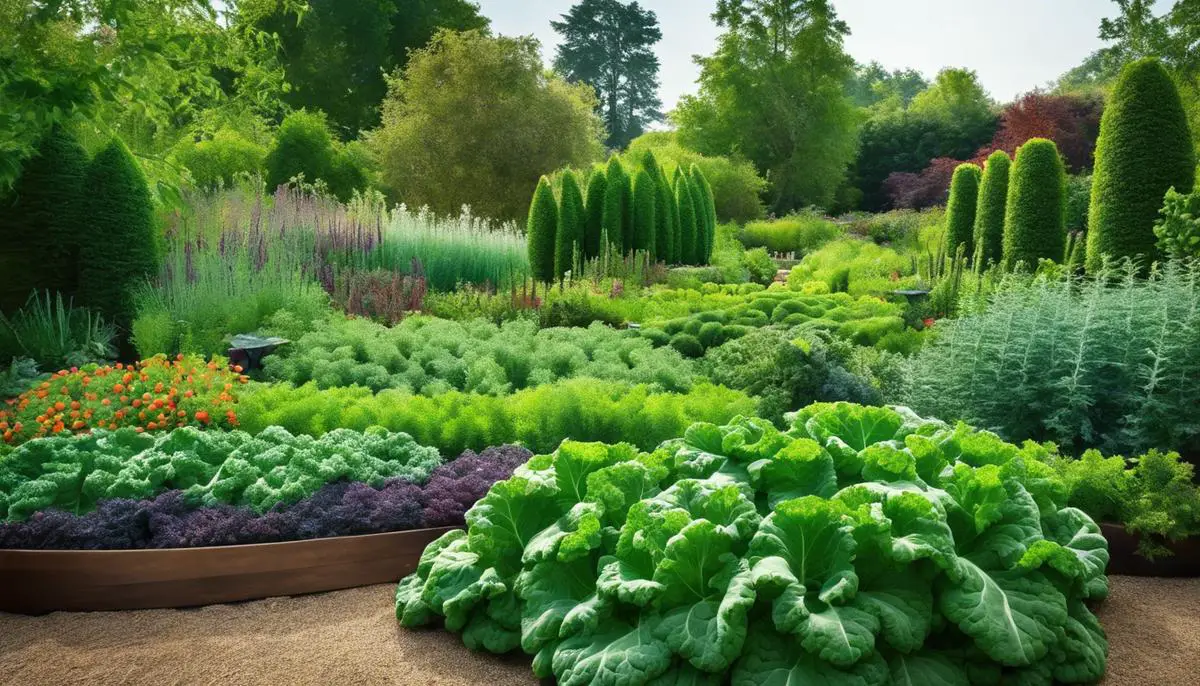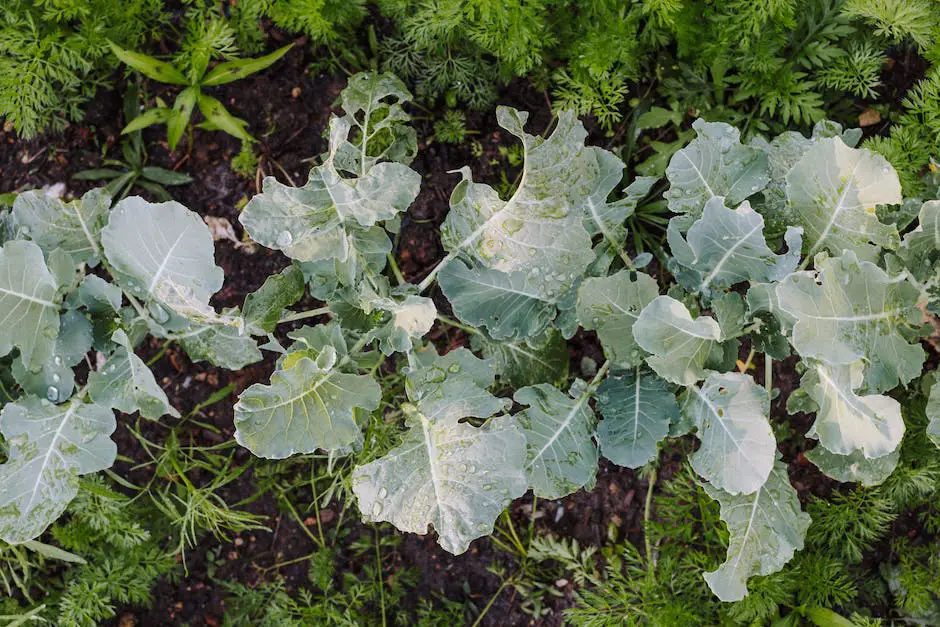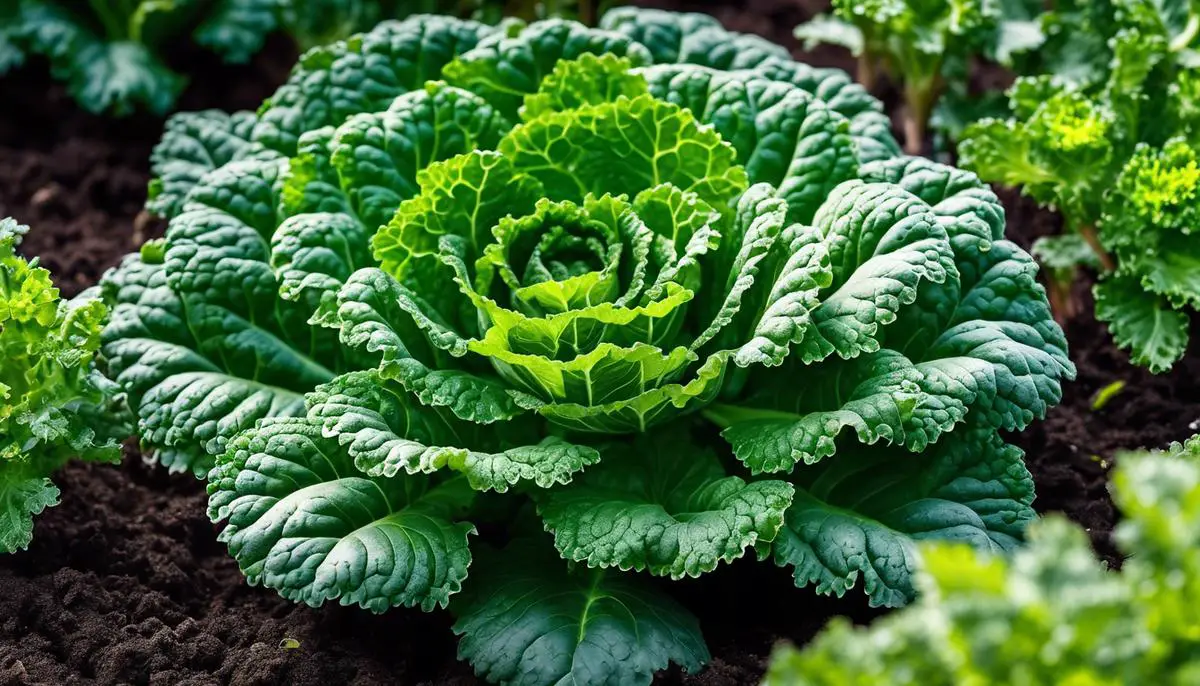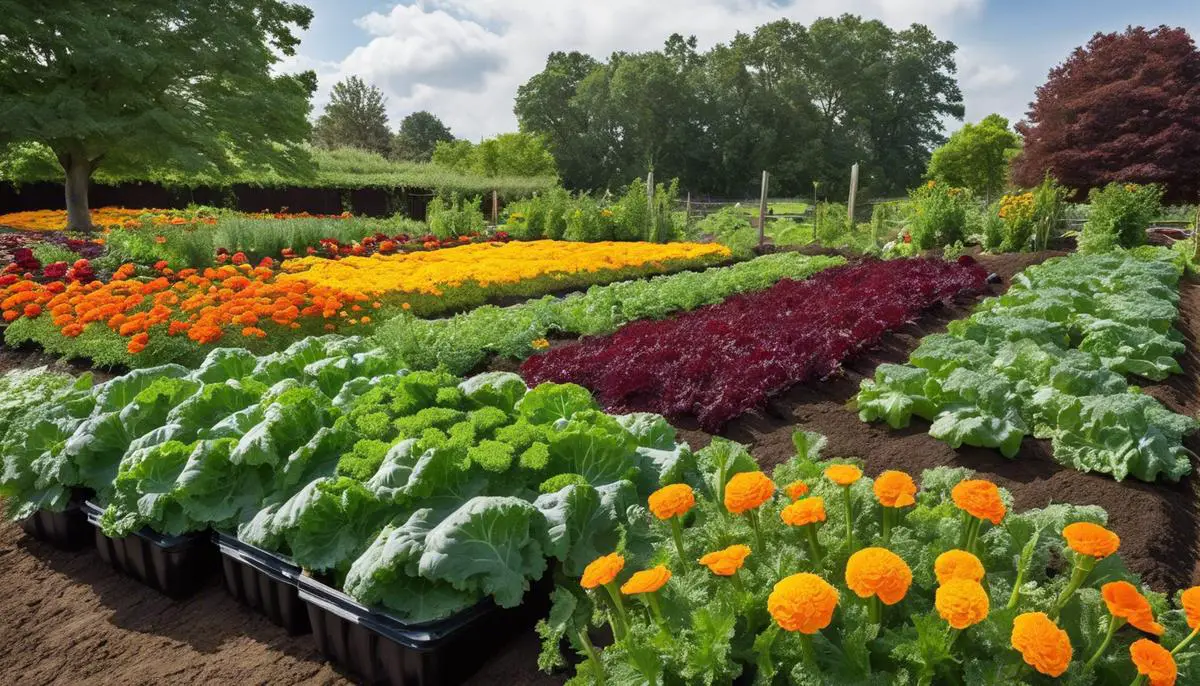Gardening is not just about planting seeds and waiting for them to grow; it’s an art that involves understanding the intricate relationships between various plant species. When it comes to nurturing kale, one of the most nutrient-dense greens, the practice of companion planting can greatly enhance its vigor and yield. This essay delves into the symbiotic world where kale coexists with its plant allies. We will uncover how companion planting leverages the power of nature to foster pest control, fortify growth, and enhance soil health, turning your kale garden into a thriving ecosystem. From the strategic planting of herbs to intermingling with flowers, the companions of kale provide a multitude of benefits that make this leafy green flourish.
Benefits of Companion Planting
When it comes to bolstering a garden’s vigor, companion planting kale is akin to finding the best teammates for a thriving vegetable community. For the uninformed, companion planting is an age-old garden strategy that utilizes the beneficial relationships between plants to enhance growth, repel pests, and boost flavor profiles. So, why should kale rub elbows with particular green pals?
Reader Poll: What online courses would interest you?
First and foremost, kale plays nice with aromatic herbs such as dill, sage, and mint. These fragrant friends serve a dual purpose: they confuse and repel common pests like aphids and cabbage moths, which are inclined to make a meal out of kale’s tender leaves. Not only do these herbs offer a solid defense line, but they also attract beneficial pollinators that provide essential services in the garden’s ecosystem. Think of these herbs as the ultimate garden guardians that shield kale from unwanted nibblers.
Another powerhouse companion is the humble legume family, namely beans and peas. These plants bring a special gift to the soil: nitrogen. Kale, being a leafy green, is a bit of a nitrogen-hog, and without an ample supply, it simply won’t thrive. Legumes naturally fix nitrogen from the air and deposit it into the soil, making it available for kale and other neighboring plants. By planting kale alongside legumes, one essentially installs an on-site fertilizer factory, which is music to any gardener’s ears. No synthetic add-ons necessary; just pure, symbiotic teamwork below the soil.
Conclusively, integrating kale with the right companions is like curating a gathering of friends who look out for each other, share resources, and create a more productive and harmonious garden space. It’s nature’s way of showing that a little cooperation goes a long way, especially in the verdant world of gardening.
Subscribe to our newsletter!

Best Companion Plants for Kale
When it comes to companion planting for kale, certain plants truly stand out as garden superheroes. Take marigolds, for example; these vibrant flowers are not just pretty to look at, they also combat pests. Marigolds release a natural chemical from their roots that nematodes find highly unappealing. These pesky soil-dwellers stay clear of kale when marigolds are in the vicinity, making them a top choice for a harmonious kale companion.
Ever considered the protective prowess of aromatic onions? Not only do they enhance so many culinary dishes, but they also serve as a strong line of defense in the garden. Placing onions near kale can help deter a variety of insects, including the common aphid. This is because onions emit a potent scent that confuses and repels many pests who might otherwise enjoy a kale feast. And let’s not overlook the sturdy beet! Beets and kale make a perfect pairing as they both thrive in similar growing conditions and don’t compete for resources. Beets help to keep the soil loose and well-drained around the kale, promoting a healthier root system for these leafy greens.
Lastly, nothing says “healthy garden” like a beautiful bunch of nasturtiums. These colorful and edible flowers do double duty by attracting aphids to themselves and away from kale. This act of sacrifice maximizes the health and yield of the kale, proving that sometimes the best companions are the ones that offer themselves up for the benefit of their neighbors. So, planting these alongside kale can create not only a visually appealing garden space but also a functional one that keeps kale leaves crisp and free from unwanted visitors.

Plants to Avoid Near Kale
When it comes to planting kale, a superstar in the veggie patch, keeping certain plants at a spade’s distance is just as important as pairing it with friendly neighbors. Tomatoes, for instance, should be on the ‘not next to kale’ list. These popular red fruits can attract pests that also love munching on kale leaves, plus they can overshadow the kale, hogging all that glorious sunlight. Strawberries are another no-go; they don’t play well with kale as they can encourage the presence of fungal diseases which can spread and damage kale’s hardy leaves.
It’s also advisable to sidestep planting kale near climbing beans or pole beans, which have the potential to smother kale plants as they reach for the sky. These enthusiastic climbers can limit kale’s access to sunlight and reduce air circulation around the leaves, creating damp conditions that could invite pests or disease. Equally, be careful with plants that are heavy feeders, like sweet corn, which can deplete the soil of nutrients kale needs to thrive and produce those lush, leafy greens. Remember, smart spacing in the garden promotes a healthier, more productive crop, letting every plant have its moment in the sun!

Companion Planting Layout Tips
When arranging kale and its companions in the garden, smart spacing plays a crucial role. Kale plants thrive with adequate room for growth, requiring about 18 to 24 inches of space between them. This spacing ensures each kale plant receives an ample amount of sunlight and airflow, which aids in disease prevention and strong development. Strategically place your kale companions like marigolds, onions, beets, and nasturtiums to enhance this environment. Marigolds, with their bright and cheerful blossoms, are not just eye candy—they can be positioned between kale plants to maximize their pest-repellent abilities. Onions, with their underground bulbs, coexist nicely without competing for the same aerial space, while beets can share the same bed, benefiting from the leafy greens’ shelter.
Intercropping is another technique that enriches the garden’s diversity and maximizes the use of available space. For example, plant radishes among your kale. Radishes grow quickly and can be harvested before the kale needs the space, providing a rapid yield and leaving behind a richer soil for the kale to continue thriving in. Similarly, aromatic herbs such as dill or chamomile can be sprinkled throughout the garden. They bring in beneficial insects and can help to mitigate the presence of unwelcome bugs without hampering the kale’s prosperity.
Remember that while kale is a hardy and versatile crop, it does have a few neighbors that can be detrimental to its well-being. As previously mentioned, steer clear of planting kale next to tomatoes, strawberries, or climbing beans. Additionally, heavy feeders like sweet corn can significantly deplete the soil of its nutrients, leaving kale with less than what it needs to flourish. With a mindful arrangement and consideration of each plant’s needs and interactions, a gardener can create a harmonious and abundant garden that is as healthy as it is beautiful.

The dance of companion planting is a delicate balance of choices that rewards the grower with a chorus of benefits that resonate throughout the garden. As the gardener, being the conductor of this green symphony, your role is to harmonize the relationships of the plants and provide them with the right environment to reach their full potential. Embracing the lessons of nature in our garden plans, we pave the way for a lush kale harvest, accompanied by a diverse community of plants that support one another. Let these insights on companion planting guide your green thumb towards creating a sustainable and bountiful garden where every plant, including kale, thrives.

